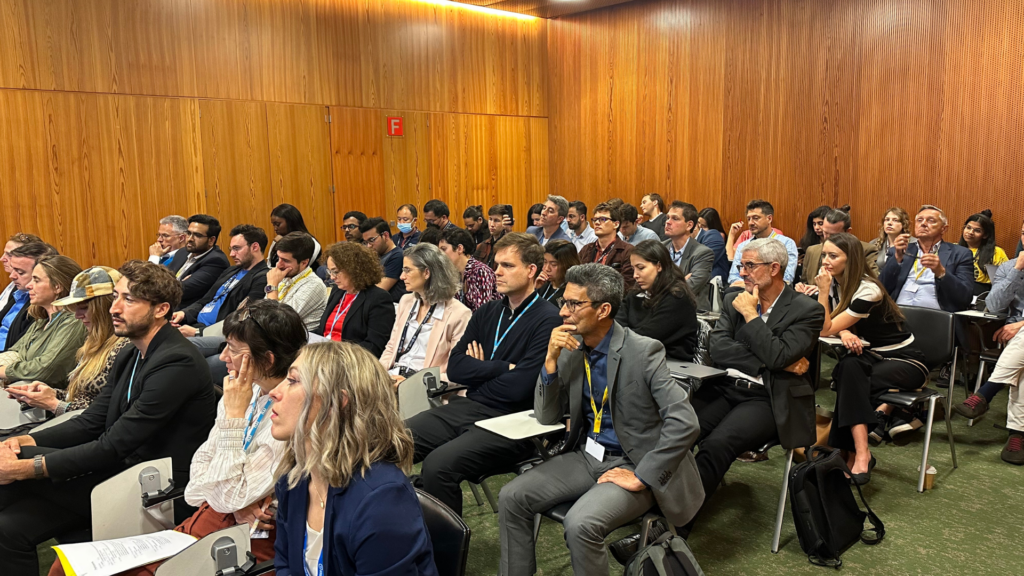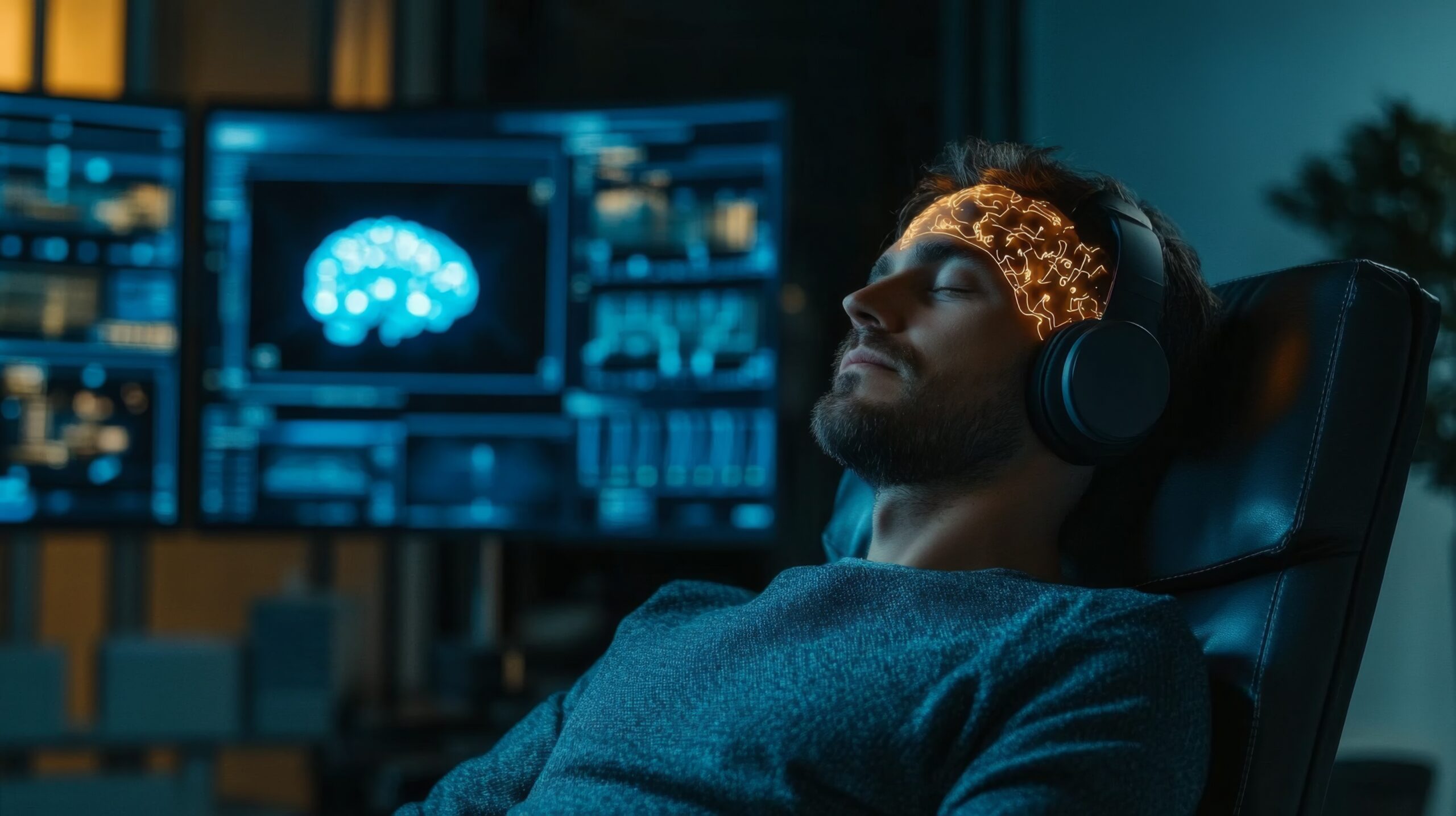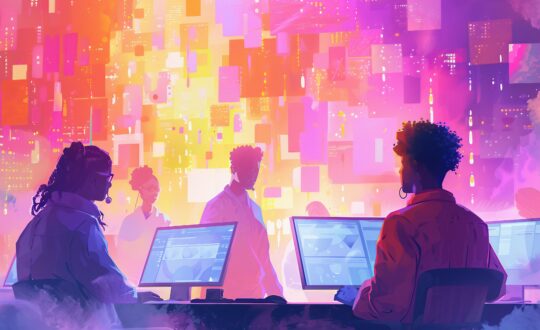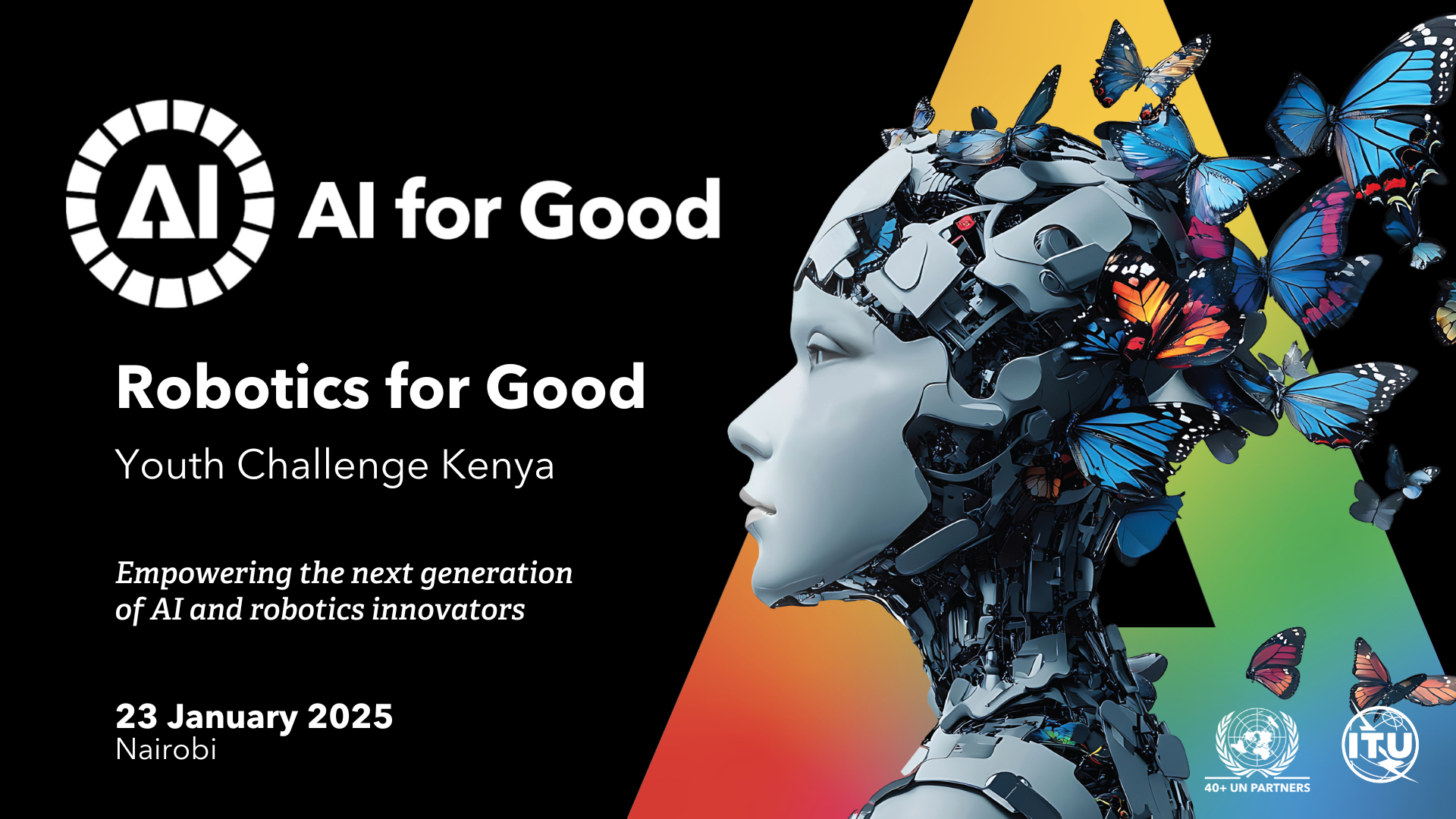Controlling things with your mind sounds like science fiction – yet the area of neurotechnology, specifically research into brain-computer interfaces (BCIs), are making telekinesis a reality, transforming the lives of those with neurological impairments. The emergence of AI is opening possibilities for this promising field – but more challenges as well.
During the workshop “AI’s next frontier: The future of brain-computer interfaces for good” at the AI for Good Global Summit 2024, leading experts in neuroscience and AI discussed the history and advancements in BCIs, their various modalities, ethical concerns, and potential applications. These experts shared the latest advancements in BCIs, their envisioned impact, and current discussions on governance and regulation to promote neurotechnology for good.
The Power of brain signals: From a frog leg’s twitch to writing a book
What can brain signals do? In short: A lot.
Scientists measure biophysical signals, from blood flow to electricity of neurons, then decode or interpret these signals with a computer to command an external installation, e. g. a cursor or a robotic arm. These BCIs are at the intersection of cutting-edge technology and human intelligence.
Its curious beginnings are already found in the 1800s when Luigi Galvan discovered a connection between electricity and the nervous system while dissecting frogs. Now, BCI technologies are foremost applied to neurologic injuries, to either replace or restore function, ultimately aiming to bring independence to patients
“You can actually train a person to create brain states that are more inducive to their recovery after a neurological injury like a stroke. […] The magic is not so much in the restoration […] but in training the person to go home, take the device off, and have better functioning use of their own limbs,” Sumner L. Norman, Co-Founder and CEO of Forest Neurotech said.
BCI technology has been bolstered by the recent advancements in AI, although most models are still following simple and basic frameworks of machine learning (ML). In any case, the progress of BCIs has been significant. Current BCIs have enabled neurologically impaired people to drive, create art, write a book and so on. More developments have shown to also lower symptoms of injury, for example, deep brain simulation has shown to be able to significantly lower effects of Parkinson’s such as tremors, other research has been able to synthesize speech from brain activity.
The questionable hype of BCIs and other challenges
These developments have gathered commercial interest, companies such as Precision Neurotech and Neuralink have raised significant funds to build neurotechnology into commercial devices. The increased public interest in possibilities of BCIs has led to commercialization efforts which could be beneficial for large-scale production.
“At the end it’s not only about technology. To bring it to patients, to have an impact, you also need funding,” explained Ana Maiques, Co-Founder of Neuroelectrics.
However, there are concerns about the scalability of these solutions. If BCIs follow the hype cycle, will they be able to deliver? And while commercialization is needed to improve the lives of as many patients as possible, who will be at the receiving end? Much research focuses on those who are most severely affected by neurological injuries, those who most need it, but those are unlikely to be the target group for commercialized BCIs.
Furthermore, if the use of AI technology would speed up the production process, another hurdle is in sight: high quality datasets that are based on diversity, quality, and quantity. AI chatbots like ChatGPT are trained on a foundational model based on huge datasets from which these systems generate their answers, the higher the quality, the better the output. A foundational model of brain data would enable next-generation BCIs to thrive.
Unfortunately, data collection is a key challenge for neuroscientists as it is slow, expensive, and often from experimental rooms instead of natural environments. These factors are barriers for the effective use of AI in neuroscience, and even more for the generalization of the technology.
However, AI technology could also support this. While research into BCIs was previously limited to the current understanding of the brain, using AI in BCIs could also increase the understanding of the brain itself.
“We’re learning neuroscience from our AI and machine learning tools, and I think that is just going to continue to rapidly accelerate the pace of development for the good of the people that we’re trying to help,” stated Daniel Rubin, Massachusetts General Hospital
Yet, this requires something that poses as a major headache for most researchers: funding. This is especially apparent for the European realm of neurotech, less in the United States. There is difficulty in the allocation, especially for long-scale funding required for impactful research, even for companies with solutions ready to scale.
This inadvertently leads to European brain drain in neurotechnology. And those that stay, criticize that these challenges, from funding and scalability to ethical concerns, are distracting from their main occupation.
“In some ways it feels so unfair that being a neurotechnology developer is one of the hardest spaces to try to work in. Funding is really hard, the work is long, the brain is really hard to work with, and then on top of that just the gravity of what you’re doing calls upon a lot of spotlight and it is frankly just a lot of responsibility to be intervening with the fundamental organ that makes you who you are”, said Karen S. Rommelfanger, CEO at Institute of Neuroethics.
NeuroTech design: For and by the users
The acceleration of the field means that developed methods are finally moving from theoretical and clinical studies to helping patients.
“I think we are in [a period] where we really can help patients with [the] methods we developed. We are still developing, but we know where the path is going. I think we can really make [a] difference and finally bring it to the patients”, emphasized Gernot Müller-Putz, Graz University of Technology
And for that, involving them is another critical issue. Considering the user’s perspective is the hallmark of any interface. The design of BCIs should involve end-users from the beginning, in the development and design stage and even at the prior research stage to match actual use cases. Taryn Southern, award-winning artist, storyteller and strategist at the intersection of AI and human potential, shared this sentiment:
“As we sit here and we talk about what’s next […], thinking about what it is that the patients themselves desire is incredibly important”.
Beyond opinions, the true use of BCIs also depends on the end-users. BCIs are not permanent tools, therefore the long-time use and post-use situation must be clarified. This is also affected by the long-time vision in terms of investment and commercialization of the business providing the device. If BCIs are only a temporary solution, who is accountable for the patient’s well-being after the technology is no longer updated?
While BCIs and AI hold great promises, there must be reflection on how the pace of technology development can match the understanding of risks when it comes to the rights of patients. Marcello Ienca, inaugural Professor of AI Ethics and Neuroscience and the Deputy Director of the Center for Ethics and History of Medicine at the Medical School of the Technical University of Munich, offers an example:
“If neurotechnology goes mainstream, that’s also going to raise additional challenges for policy. For example, neural data privacy is a topic that we’ve been working on for many years in the neo-Ethics community, but the more neural data will be collected and processed in contexts that are underregulated, […] the higher the chances that this could lead to potential misuses [that] need to be anticipated”.

User-centered design for technologies, human-centered design for policy
Benchmarks such as involving end-users early on and taking real-life use cases into account apply not only to technology products, but also policy instruments. What is missing currently is the actual involvement of the people exposed to the policies and standards deployed on the national and international level.
“There are a lot of opportunities [for] great advancement in [health], so we cannot hinder innovation and development for the good of people […]. But at the same time, we should be questioning within which framework we are developing this, if we can keep the pace of the advancement, and if we are ready to digest all these kinds of technology, from the human rights perspective?” said Milena Costas Trascasas, Member of the UN Human Rights Council Advisory Committee at United Nations.
Policy proposals have already emerged from many multilateral platforms: Council of Europe, UNESCO, United Nations, etc. The European Union for instance is considering including neural data in the General Data Protection Regulation (2021), comparable to genetic data.
It is important that legally binding frameworks are created to ensure accountability for human rights violations. On the same note, ethical guidelines are needed to be established on the supranational level, to inspire national regulation where there is no capacity to develop them on their own.
“We live in a world where half of the world population does not have access to basic neural imaging technology. And 99.9% of the world doesn’t have access to the beautiful advanced BCIs that we’ve seen here, so how can we promote the right to health of the entire world population in the context of advancing neurotechnology?” said Tim Mullen, CEO and Research Director at Intheon
Importance of co-creation: Jointly guiding neurotechnology
No matter the policy product and outcome, participants stressed the importance of involvement of civil society, academia, and industry so that policymakers can design policies that support solutions.
“We think about technical tools, for instance decoding the brain or measuring the brain. I think we also need better technical tools for implementing governance and responsible practices” emphasized Ricardo Chavarriaga, Group Leader Responsible AI Innovation at Zurich University of Applied Sciences
However, receiving this expert guidance from diverse stakeholders is difficult. A decentralized approach such as the one UNESCO and OECD have followed for their recommendations of neurotechnology, was criticized as being too fragmented. Yet, while relying solely on open calls for inputs seems insufficient, there is a lack of alternatives.
The problem further emerges from both directions. Companies are unaware of what governments are doing, while governments do not have a designated expert advisor to tell them which companies should be informed and consulted. Both sides have frustrations of being ill-informed about current developments and options to participate or contribute. Erwin Böttinger, CEO of the Wyss Center, voiced his concern:
“I think initiatives in the EU that are well intentioned from a policy perspective are not always the best guidance for us […]. We have a line of EU regulations that make life not easier, compared to our competitors or colleagues in the US.”
That leaves practitioners with a responsibility to be proactive themselves to avoid the worst-case scenario: policies creating additional barriers for research, delaying the dissemination of neurotech solutions.
Outlook: The role of AI development in neurotechnology
How will AI affect the field of neurotechnology? While the exact outcome remains unknown, there are certainly concerns among experts. The lack of quality data accessible to neuroscientist researchers, dangers of mass commercialization, the added physicality component of BCIs in e. g. sensors and implants, if strengthened by AI systems, it would cause even more inequality.
“All of these [physicality components] contribute to additional sources of bias in a way that interacts with the AI system that you’re developing right? It’s not that necessarily different but it is exacerbated in my opinion”, highlighted Sara Berger, Research Staff Member at IBM T.J. Watson Research Lab.
When it comes to BCIs, individuality is key. Every BCI product is highly personalized, so scrutiny of applying advanced ML to this field is self-explanatory. Yet, there is also hope that the use of AI could help to personalize these systems by acting as an agent that personalizes devices based on data about the state of the patient, a kind of AI-guided neuromodulation. However, it has also shown that using ML could decrease a patient’s chance to modulate their brain signals, which would undermine the ultimate goal of using technology to get rid of technology – meaning instead of restoring abilities, it would simply replace them.
“We have evidence that if you use too much machine learning, people become lazy and they not only [do] not learn to modulate their brain signals, but the initial capacity also to modulate is lost because they are not engaged in the process”, said José del R. Millán, Professor at University of Texas at Austin
While some BCI researchers view implantable technologies for restoration as a solution for the few instead of the many, it remains to be seen what kind of products will be developed that could cut across applications, especially among the Big Tech companies, that could offer something on a larger scale, improving accessibility and price points.
Thus, the debate on whether AI could enhance biases or improve options in the field of neuroscience is ongoing, much like the debate on AI itself. Going forward, not only will the technological developments but also its governance efforts continue to affect each other.

















